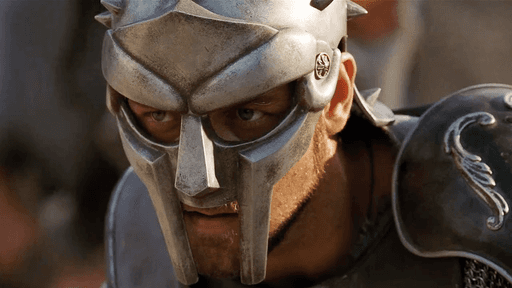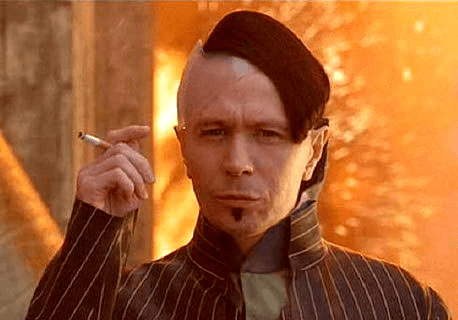IoT & Flutter: Building the Connected Experiences of Tomorrow
IoT & Flutter: Building the Connected Experiences of Tomorrow

Sep 22, 2025
By Boneyard
I watched a facilities manager last week try to monitor seventeen different building systems through eleven separate mobile apps. HVAC controls through one interface, security cameras through another, lighting systems through a third. When the fire alarm integration failed, he had to call the vendor and wait three hours for a technician to reset something that should have been a thirty-second fix.
This is the IoT reality most companies live with—fragmented systems that promise seamless integration but deliver operational chaos instead. Every device manufacturer builds their own app, uses their own protocols, creates their own user experience disasters.
But smart companies are breaking free from this fragmentation hell. They're using Flutter to create unified interfaces that actually work across platforms and devices. While their competitors juggle multiple apps and pray their systems communicate properly, these companies are building connected experiences that feel like magic but operate like well-oiled machines.
The difference isn't just technical—it's strategic. In markets where operational efficiency determines competitive position, the ability to manage complex IoT ecosystems through coherent interfaces becomes a critical advantage.
Why Flutter Changes Everything
Most IoT interfaces fail because they're built like afterthoughts. Device manufacturers focus on hardware functionality and treat software as a necessary evil. They create apps that work on one platform, sort of integrate with other systems, and provide user experiences that feel like they were designed by engineers who've never actually used their own products.
Flutter solves three fundamental problems that kill IoT implementations. Cross-platform consistency means you write once and run everywhere—mobile, web, desktop, even embedded systems. No more iOS version that works differently from Android, no more web dashboard that looks nothing like the mobile app.
Performance under pressure matters when you're dealing with real-time data streams from hundreds of sensors. Flutter's rendering engine handles continuous updates, smooth animations, and responsive interactions even when your system is processing massive amounts of sensor data.
Most importantly, Flutter makes complex data comprehensible through interfaces that actually make sense to human beings. You can build visualizations that show meaningful patterns instead of overwhelming users with raw sensor readings.
I've seen companies transform their operations by replacing scattered IoT interfaces with unified Flutter applications. Facility managers who spent hours jumping between systems now monitor everything through single dashboards. Factory operators who needed different devices for different machines now use tablets that control entire production lines.
The technology isn't revolutionary—the strategic consolidation is.
Where Real Value Gets Created
Smart home systems showcase this transformation perfectly. Five years ago, controlling connected devices meant managing separate apps for lights, thermostats, security systems, entertainment devices. Each app had different interaction patterns, different visual designs, different approaches to automation.
Flutter-based home management platforms are eliminating this complexity by creating unified experiences that understand context instead of just executing commands. Your lighting adjusts based on family activity recognition. Energy optimization happens automatically based on usage patterns and utility pricing. Security monitoring combines camera feeds, sensor data, and access logs in interfaces that highlight what matters instead of overwhelming you with information.
The result isn't just convenience—it's operational intelligence. Homeowners can actually understand how their houses work, identify efficiency opportunities, and prevent problems before they become expensive repairs.
Healthcare IoT creates even more dramatic value when properly integrated. Patient monitoring systems generate streams of vital sign data, medication adherence information, activity tracking, and environmental factors. Presented separately, this data overwhelms patients and caregivers. Unified through thoughtfully designed Flutter interfaces, the same information becomes actionable insight.
I've worked with healthcare providers who've reduced patient readmission rates by 30% simply by making IoT data comprehensible to patients and their families. The sensors didn't change—the interface did.
The Technical Reality
Building effective Flutter IoT solutions requires understanding that connectivity isn't binary—it's probabilistic. Devices lose connections, networks fail, data gets corrupted. Your application must assume these failures and design around them gracefully.
Bluetooth Low Energy works perfectly for direct device communication until you walk to the next room. MQTT handles lightweight messaging beautifully until network conditions change. WebSockets provide bidirectional communication until the connection drops mid-conversation.
The companies succeeding with Flutter IoT don't just handle these scenarios—they design for them from day one. They cache critical data locally, queue commands during connectivity gaps, synchronize state intelligently when connections restore, and provide clear feedback about system status.
State management becomes crucial when you're dealing with dozens or hundreds of connected devices, each generating data streams that must be processed, displayed, and stored appropriately. Flutter's state management approaches—Provider, Riverpod, Bloc—can be adapted for IoT complexity, but they require careful architecture to maintain performance as systems scale.
Security demands even more attention in IoT contexts because you're not just protecting data—you're protecting physical access to buildings, medical devices, industrial equipment. End-to-end encryption, secure device provisioning, permission management, and privacy controls must be implemented consistently across all platforms.
Most IoT security breaches happen not because the encryption failed, but because the user interface made secure practices difficult or confusing. Flutter's ability to create consistent, intuitive security interfaces across platforms directly impacts system security.
The Industrial Edge
Manufacturing environments showcase Flutter's IoT potential most dramatically. Production lines generate enormous amounts of sensor data about temperature, pressure, vibration, quality metrics, efficiency indicators. Traditional industrial interfaces display this information through systems that look like they were designed in 1987—because they were.
Flutter-based industrial dashboards transform this data into operational intelligence. Equipment maintenance gets scheduled based on actual usage patterns and predictive algorithms instead of arbitrary time intervals. Production line monitoring provides real-time alerts for anomalies that matter instead of false alarms that get ignored. Safety compliance becomes proactive instead of reactive.
The strategic impact extends beyond efficiency gains. Companies with superior operational visibility can respond faster to market changes, optimize inventory levels more precisely, and identify improvement opportunities that competitors miss entirely.
I've watched manufacturing clients reduce unplanned downtime by 40% and improve overall equipment effectiveness by 25% simply by making their existing sensor data more accessible and actionable through better interfaces.
What's Coming Next
The convergence of AI and IoT through Flutter interfaces will create capabilities that seem almost supernatural. Edge devices already incorporate basic machine learning for anomaly detection, predictive analysis, and pattern recognition. Flutter applications will evolve to provide interfaces for these intelligent features while maintaining the performance and battery efficiency that industrial applications demand.
Digital twins—virtual representations of physical systems—will become standard for complex IoT deployments. Instead of monitoring individual sensors, operators will interact with real-time 3D models that show how entire systems behave under current conditions. Flutter's rendering capabilities make these sophisticated visualizations practical across platforms.
Ambient computing represents the ultimate IoT interface evolution—technology that anticipates needs instead of waiting for commands, provides assistance proactively based on learned patterns, and fades into the background until needed. Flutter's flexibility will be essential for creating these subtle yet powerful experiences.
The Strategic Window
Companies that master Flutter IoT integration during the next eighteen months will create operational advantages that competitors can't easily replicate. While others struggle with fragmented systems and interface chaos, these companies will operate with unified visibility, predictive capabilities, and responsive control systems.
The opportunity isn't just about better dashboards—it's about transforming how humans interact with connected systems. Making complex IoT ecosystems comprehensible and controllable through interfaces that feel natural instead of overwhelming.
Every month you delay IoT interface consolidation, operational complexity compounds. Your teams waste more time switching between systems, miss more optimization opportunities, and make more decisions based on incomplete information.
Your competitors are already building these unified experiences. The question is whether you'll join them or continue managing IoT chaos through scattered, incompatible interfaces that make connected systems feel more like punishment than progress.
The connected future is already here. Flutter just makes it possible to interact with that future in ways that actually make sense.
By Boneyard
I watched a facilities manager last week try to monitor seventeen different building systems through eleven separate mobile apps. HVAC controls through one interface, security cameras through another, lighting systems through a third. When the fire alarm integration failed, he had to call the vendor and wait three hours for a technician to reset something that should have been a thirty-second fix.
This is the IoT reality most companies live with—fragmented systems that promise seamless integration but deliver operational chaos instead. Every device manufacturer builds their own app, uses their own protocols, creates their own user experience disasters.
But smart companies are breaking free from this fragmentation hell. They're using Flutter to create unified interfaces that actually work across platforms and devices. While their competitors juggle multiple apps and pray their systems communicate properly, these companies are building connected experiences that feel like magic but operate like well-oiled machines.
The difference isn't just technical—it's strategic. In markets where operational efficiency determines competitive position, the ability to manage complex IoT ecosystems through coherent interfaces becomes a critical advantage.
Why Flutter Changes Everything
Most IoT interfaces fail because they're built like afterthoughts. Device manufacturers focus on hardware functionality and treat software as a necessary evil. They create apps that work on one platform, sort of integrate with other systems, and provide user experiences that feel like they were designed by engineers who've never actually used their own products.
Flutter solves three fundamental problems that kill IoT implementations. Cross-platform consistency means you write once and run everywhere—mobile, web, desktop, even embedded systems. No more iOS version that works differently from Android, no more web dashboard that looks nothing like the mobile app.
Performance under pressure matters when you're dealing with real-time data streams from hundreds of sensors. Flutter's rendering engine handles continuous updates, smooth animations, and responsive interactions even when your system is processing massive amounts of sensor data.
Most importantly, Flutter makes complex data comprehensible through interfaces that actually make sense to human beings. You can build visualizations that show meaningful patterns instead of overwhelming users with raw sensor readings.
I've seen companies transform their operations by replacing scattered IoT interfaces with unified Flutter applications. Facility managers who spent hours jumping between systems now monitor everything through single dashboards. Factory operators who needed different devices for different machines now use tablets that control entire production lines.
The technology isn't revolutionary—the strategic consolidation is.
Where Real Value Gets Created
Smart home systems showcase this transformation perfectly. Five years ago, controlling connected devices meant managing separate apps for lights, thermostats, security systems, entertainment devices. Each app had different interaction patterns, different visual designs, different approaches to automation.
Flutter-based home management platforms are eliminating this complexity by creating unified experiences that understand context instead of just executing commands. Your lighting adjusts based on family activity recognition. Energy optimization happens automatically based on usage patterns and utility pricing. Security monitoring combines camera feeds, sensor data, and access logs in interfaces that highlight what matters instead of overwhelming you with information.
The result isn't just convenience—it's operational intelligence. Homeowners can actually understand how their houses work, identify efficiency opportunities, and prevent problems before they become expensive repairs.
Healthcare IoT creates even more dramatic value when properly integrated. Patient monitoring systems generate streams of vital sign data, medication adherence information, activity tracking, and environmental factors. Presented separately, this data overwhelms patients and caregivers. Unified through thoughtfully designed Flutter interfaces, the same information becomes actionable insight.
I've worked with healthcare providers who've reduced patient readmission rates by 30% simply by making IoT data comprehensible to patients and their families. The sensors didn't change—the interface did.
The Technical Reality
Building effective Flutter IoT solutions requires understanding that connectivity isn't binary—it's probabilistic. Devices lose connections, networks fail, data gets corrupted. Your application must assume these failures and design around them gracefully.
Bluetooth Low Energy works perfectly for direct device communication until you walk to the next room. MQTT handles lightweight messaging beautifully until network conditions change. WebSockets provide bidirectional communication until the connection drops mid-conversation.
The companies succeeding with Flutter IoT don't just handle these scenarios—they design for them from day one. They cache critical data locally, queue commands during connectivity gaps, synchronize state intelligently when connections restore, and provide clear feedback about system status.
State management becomes crucial when you're dealing with dozens or hundreds of connected devices, each generating data streams that must be processed, displayed, and stored appropriately. Flutter's state management approaches—Provider, Riverpod, Bloc—can be adapted for IoT complexity, but they require careful architecture to maintain performance as systems scale.
Security demands even more attention in IoT contexts because you're not just protecting data—you're protecting physical access to buildings, medical devices, industrial equipment. End-to-end encryption, secure device provisioning, permission management, and privacy controls must be implemented consistently across all platforms.
Most IoT security breaches happen not because the encryption failed, but because the user interface made secure practices difficult or confusing. Flutter's ability to create consistent, intuitive security interfaces across platforms directly impacts system security.
The Industrial Edge
Manufacturing environments showcase Flutter's IoT potential most dramatically. Production lines generate enormous amounts of sensor data about temperature, pressure, vibration, quality metrics, efficiency indicators. Traditional industrial interfaces display this information through systems that look like they were designed in 1987—because they were.
Flutter-based industrial dashboards transform this data into operational intelligence. Equipment maintenance gets scheduled based on actual usage patterns and predictive algorithms instead of arbitrary time intervals. Production line monitoring provides real-time alerts for anomalies that matter instead of false alarms that get ignored. Safety compliance becomes proactive instead of reactive.
The strategic impact extends beyond efficiency gains. Companies with superior operational visibility can respond faster to market changes, optimize inventory levels more precisely, and identify improvement opportunities that competitors miss entirely.
I've watched manufacturing clients reduce unplanned downtime by 40% and improve overall equipment effectiveness by 25% simply by making their existing sensor data more accessible and actionable through better interfaces.
What's Coming Next
The convergence of AI and IoT through Flutter interfaces will create capabilities that seem almost supernatural. Edge devices already incorporate basic machine learning for anomaly detection, predictive analysis, and pattern recognition. Flutter applications will evolve to provide interfaces for these intelligent features while maintaining the performance and battery efficiency that industrial applications demand.
Digital twins—virtual representations of physical systems—will become standard for complex IoT deployments. Instead of monitoring individual sensors, operators will interact with real-time 3D models that show how entire systems behave under current conditions. Flutter's rendering capabilities make these sophisticated visualizations practical across platforms.
Ambient computing represents the ultimate IoT interface evolution—technology that anticipates needs instead of waiting for commands, provides assistance proactively based on learned patterns, and fades into the background until needed. Flutter's flexibility will be essential for creating these subtle yet powerful experiences.
The Strategic Window
Companies that master Flutter IoT integration during the next eighteen months will create operational advantages that competitors can't easily replicate. While others struggle with fragmented systems and interface chaos, these companies will operate with unified visibility, predictive capabilities, and responsive control systems.
The opportunity isn't just about better dashboards—it's about transforming how humans interact with connected systems. Making complex IoT ecosystems comprehensible and controllable through interfaces that feel natural instead of overwhelming.
Every month you delay IoT interface consolidation, operational complexity compounds. Your teams waste more time switching between systems, miss more optimization opportunities, and make more decisions based on incomplete information.
Your competitors are already building these unified experiences. The question is whether you'll join them or continue managing IoT chaos through scattered, incompatible interfaces that make connected systems feel more like punishment than progress.
The connected future is already here. Flutter just makes it possible to interact with that future in ways that actually make sense.
WEEKLY NEWSLETTER
Your Edge in the AI Revolution
Stay ahead with our carefully curated resources and actionable intelligence on AI developments. Join thousands of professionals who receive our free weekly digest featuring practical guides, case studies, and industry analysis—no fluff, just what matters most for your business.

Maximus Decimus Meridius

Jean-Baptiste Emanuel Zorg

President Whitmore

Dick Cheney

President Camacho
Loved by 1000+ world leaders
Get exclusive AI tools, frameworks, and insights delivered straight to your inbox. Never miss a breakthrough that could transform your workflow.
WEEKLY NEWSLETTER
Your Edge in the AI Revolution
Stay ahead with our carefully curated resources and actionable intelligence on AI developments. Join thousands of professionals who receive our free weekly digest featuring practical guides, case studies, and industry analysis—no fluff, just what matters most for your business.

Maximus Decimus Meridius

Jean-Baptiste Emanuel Zorg

President Whitmore

Dick Cheney

President Camacho
1000+ world leaders
Get exclusive AI tools, frameworks, and insights delivered straight to your inbox. Never miss a breakthrough that could transform your workflow.
WEEKLY NEWSLETTER
Your Edge in the AI Revolution
Stay ahead with our carefully curated resources and actionable intelligence on AI developments. Join thousands of professionals who receive our free weekly digest featuring practical guides, case studies, and industry analysis—no fluff, just what matters most for your business.

Maximus Decimus Meridius

Jean-Baptiste Emanuel Zorg

President Whitmore

Dick Cheney

President Camacho
1000+ world leaders
Get exclusive AI tools, frameworks, and insights delivered straight to your inbox. Never miss a breakthrough that could transform your workflow.
